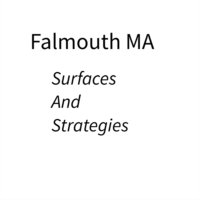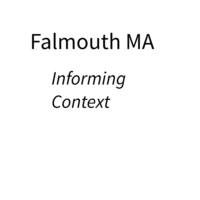I decided to attend the Photographer’s Gallery talk with David Hurn and Simon Robert’s for a number of reasons. They are both exhibiting in London at the same time as my show across the river at the National Maritime Museum. Simon Robert’s work has been has contextual relevance to my practice as The Pier’s in my project featured in Simon’s Book Pierdom. While David was the source of inspiration for the print swop activity organised by Philip Singleton at the Falmouth Face to Face event in February.
I created a set of notes from the talk and include my own thoughts on the dialogue.
David and Simon first met when David critiqued Simon’s work and now they are exhibiting at the same show. David’s view is that one’s photography gets better over time. David joined the army and the start of his photographic career can be traced back to a photograph in Picture Post of a Russian soldier buying his wife a hat and that resonated with David’s childhood memory of his father buying his mother a hat. For David photography is about capturing the intimate moments between two people. For him photography hits you emotionally and can counteract propaganda. (Though there are many cases where photography has been used for propaganda purposes such as 1930’s Germany such as some of the work by August Sander during that period.) David feels his photography is actually about life and the reaction of people doing stuff. His photography can be described as observed life.
David’s view is there are many good photographer like there are many good doctors., however not all good doctors are surgeons. There are a lot of photographs being taken today and photographers need to recognise that fact. Good photographers he felt take a lot of pictures (the 10,000 hour rule.(Anon, 2018) required to become an expert) however they need to master technique which is what photographers such Don MuCullen and John Bulmer have achieved in the opinion of David Hurn. He felt mastery of photography is in essence similar to a concert pianist you play the piano a lot.
Simon Robert’s photographic degree provides structure to his photography though listening to his story about his time as a photo journalist in Sheffield you start to understand that is where he learnt to operate photography as a business. He realised the importance of owning authorship of his images there was image he took of John Prescott that was syndicated by the local newspaper and earned them more than his salary for the whole time he work at the paper. David started shooting his own projects including work about a boxer Daniel Teesdale that went on to become a story about a tap dancing boxer.
Simon said that photographers need to create stories they believe in and need to control their archive (Simon’s pension scheme.) David commented that newspapers teach you about being on time shooting regardless of the weather and he felt providing Simon with a grounding for life.
The conversation moved on to talk about Magnum Photography which David views as a benchmark for a certain type of photography. Though interestingly the most recent photographers to join the Magnum family have not photographic educations they come from other disciplines and have started to use photography as a vehicle to communicate. David was of the opinion that a unless you are careful when selecting a photographic degree you might end up with lecturers who teach you how not to do things. He recognised the importance of selecting lecturers who are master practitioners in the an area that you want to gain mastery in otherwise there are maybe better ways to spend the money required to complete a degree. (Note: An interesting point of reflection on my own decision to go back to university to complete the Masters and the decision to select Falmouth with its reputation for having lecturers who are photographic practitioners.)
We recognise the importance of a photographer developing their own photographic voice. The last time David accepted a brief was in 1970 since then all his work has been self-initiated. When creating work from your own ideas it is important to follow through on the ideas and understand the rules of the game. David asked Simon for his strategy to which he replied that you cannot wait for others you need to work from your own personality. They both felt it was analogous to composers one say’s that Mozart is better Bach they create different work. It is important to get your work out into the public domain Editorial is shrinking now stories need to be created in 3 days. Pitching ideas to editors can make their life easier and therefore they are more likely to commission the photographer who had the idea than get another photographer. Shoot to define your voice.
Simon got a commission from Parliament from the last General Election. He had to pitch his idea to a parliamentary subcommittee, he got the commission possibly because a number of other photographers turned down the project because it stipulated in the brief that parliament would own copyright. Once he was awarded the commission he renegotiated the contract so that the work would be created as an edition of 3 and parliament would own one of each piece of work which has allowed Simon to retain copyright.
Print sales for both David and Simon are important income streams. David has a unique strategy in that he produces his work in 3 different sizes. The large two sizes are editions however he retains he right to sell small size print in an uneditioned form which he feels sits better with his own values. Simon commented on the importance of having multiple income streams so that if the market moves you are protected. For him that is editioned prints, books and commissioned work.
David made the comment that photography transitions to being art when a gallery can sell the work. David reflected on the earlier part of his career he would visit Magnum and look through loads of contact sheets to understand the work of other photographers and the fact that photographers might only select 1 or 2 images from several rolls of film to develop into prints. He referenced a lunch conversation between Henri Cartier Bresson, Eugene W Smith, Bill Brandt and himself where Bresson asked smith how many good photographs he took a year. To which Smith replied about a dozen leaving Bresson to retort you always had a high opinion of your own work. (Note of reflection if master photographers such as these might only produce a handful of great photographs in a year that is a real challenge for an MA student to develop a representative body of work for exhibition in the 2 years of a part time course where we are still developing our voices.) The conversation moved on to bias in selecting of photographers as the Great British Seaside exhibition is 4 white male photographers possible not representing gender and racial equality of society today. Similarly Magnum has been dominated by white male photographers. David’s view was that Magnum was looking to select from a certain standard of International Photographers rather than their being any form of bias in the selection process, just a lack of talent because of the environment in countries in places like South America.
The final part of the conversation moved on to photographic legacy. David has amassed an amazing collection of photographic images which he felt is worth in the region of £3.5 million. He has used that asa bargaining tool to have the Museum in Wales agree to take his own photographic archive and create a gallery for social documentary photography. The challenge for other photographers is the cost of space required to hold archives and especially film which needs to be kept cold to prevent it deteriorating overtime. After all who wants to spend time in a chilled room reviewing negatives.
The talk concluded.
After the talk I went to speak to Simon Roberts due to his influence on my current project. I has also printed a 5×7 from the WIP of the Walton Pier Superstructure and presented it to Simon as a hand written invite to my exhibition in August. Simon though that showed a level of imagination and foresight to do that. Though on reflection I should have got someone to take a picture of me giving him the invite and then posted it on Social Media.
References
- Anon, (2018). [online] Available at: https://problogservice.com/2012/03/15/what-malcolm-gladwell-really-said-about-the-10000-hour-rule/ [Accessed 20 Apr. 2018].




